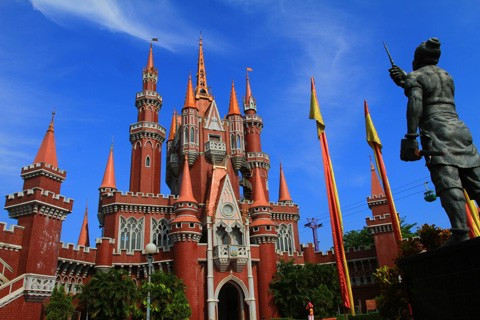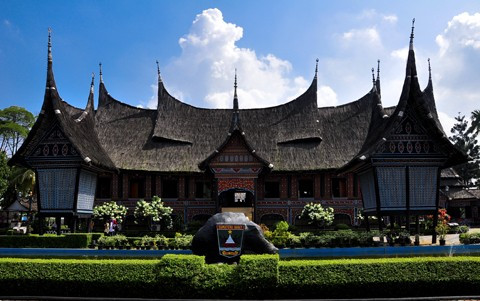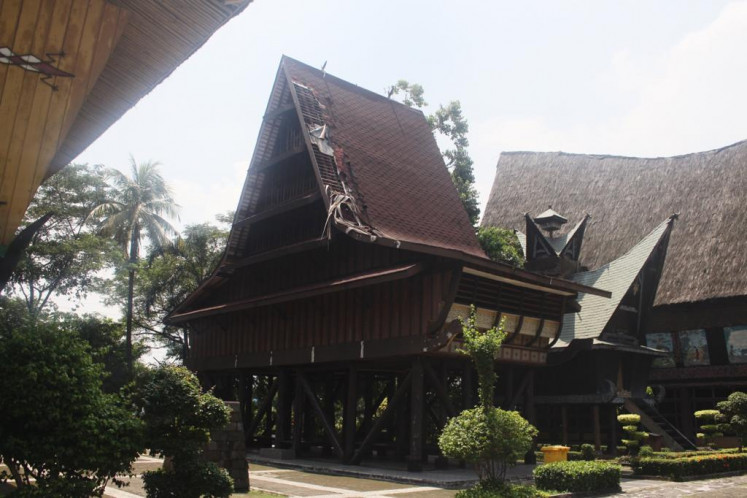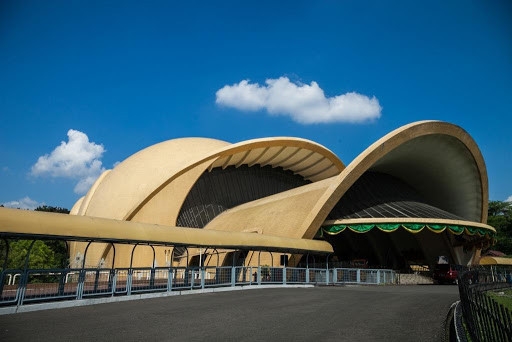Popular Reads
Top Results
Can't find what you're looking for?
View all search resultsPopular Reads
Top Results
Can't find what you're looking for?
View all search resultsFantasy of a perfect Indonesia: Growing up with TMII
TMII is close to the hearts of many Indonesians as it has shaped their view of what their country looks like and stands for. A recent controversy shines a light on TMII's relevance and significance and serves as a wake-up call to monitor the past and ongoing corruption practices.
Change text size
Gift Premium Articles
to Anyone
I
t seems odd, but like many other Indonesians, my perception of my country's cultural richness stemmed from my many study tours to Taman Mini Indonesia Indah (TMII), a theme park that was opened in 1975. A visit there was always an occasion, filled with excitement, especially as young school children.
Back in the 1980s and 1990s, nearly all elementary schools in Jakarta would arrange study tours to this theme park-slash-open-air museum, which is located in East Jakarta. The theme park showcased life-sized pavilions replicating traditional houses for each province in Indonesia. TMII laid a foundation for understanding Indonesia, especially in a cultural context, for many Indonesians at their most impressionable age. It was glorious and idyllic.
But with tax debts reportedly racking up, along with increasing operational costs and losses of between Rp 40 billion (US$2.79 million) and Rp 50 billion a year, the question is: Does TMII serve its initial function of cultural conservation, or is it merely a showpiece of the past, instilled with New Order propaganda?
How it started, how it's going
TMII was established at the behest of former president Soeharto under the New Order regime. This isn’t a historical secret. But what has been under wraps is the fact that TMII suffered massive losses for 44 years while being managed by the Harapan Kita Foundation, led by the Soeharto family.
This discovery came from a lawsuit filed by a Singapore-based firm Mitora Pte Ltd against five of Soeharto’s for their unpaid obligations. The bill aimed to confiscate the Soeharto family's belongings, including 2 hectares of the 145 ha TMII area.
"There was political heat during that time, as people were questioning the significance of this state-funded megaproject over a park," JJ Rizal, a historian and founder of history books publisher Komunitas Bambu told The Jakarta Post.
Traditions kept alive: The West Sumatra pavilion in Taman Mini Indonesia Indah (TMII). (Taman Mini Indonesia Indah documentation/Courtesy of Taman Mini Indonesia Indah)Soeharto was considered one of the world's most corrupt leaders, according to Berlin-based anticorruption NGO Transparency International. So, not only was TMII suspected to have been built to serve as the family’s personal cash cow, its construction came at the expense of local residents. Roughly 300 houses were razed to make way for the project, which was initiated by Soeharto's wife, Tien Soeharto. The inspiration reportedly came from her visit to Disneyland in the United States and a park with a similar theme in Bangkok.
The financial backing was not endorsed by many. Travel journalist Cristian Rahadiansyah told the Post: "Tien Soeharto collected the capital by way of crowdfunding. She persuaded each of Indonesia's provincial governors to turn her idea into reality."
Each pavilion that represents a province's cultural identity was taken care of by the local governors. At the height of the family’s powers, no one said “no” to a Soeharto family member.
Yet in the context of tourism, TMII has secured a prominent spot.
"It was the first tourist attraction with Indonesian identity as the overarching theme," Cristian added.
The face of Indonesia
Cristian, 41, who grew up during Soeharto's three-decade presidency, said he had been spoon-fed to see Indonesia with a specific outlook.
"TMII was only a minuscule part of the whole New Order propaganda, and the idea kept being implanted through television, books, even education curriculums," he said.
Not maintained: The roof tiles of the North Sumatra pavilion shows damages in need of repair. (JP/Vania Evan)Mudita Nanda, 23, was also left with a lasting impression of TMII after visiting the complex back when he was in elementary school.
"I think almost every year, my school took students to TMII to explore the many attractions inside, like Keong Emas [the first Sydney Opera House-like theater at that time], aquarium park and several others," he told the Post.
"The feeling of being in a huge theme park to witness Indonesia close up was amazing, and at that time, there weren't so many similar destinations in Jakarta," Mudita said, adding that TMII had a special place in his heart.
Massive dome: The first IMAX theater in Indonesia was Keong Mas Theater in Taman Mini Indonesia Indah (TMII). (Encyclopedia DKI Jakarta/Courtesy of Encyclopedia DKI Jakarta)In a historical context, JJ Rizal said it was safe to see TMII as a cultural heritage. "Just like the Dutch colonial government represented their era through the Menteng area [Central Jakarta], Soeharto was trying to make a representation of Indonesia through a theme park.
"It was an artifact of the New Order, representing Indonesia in a Javanese concept as reflected by the architecture style. TMII depicts the political condition at the time it was built. TMII was the face of the New Order, not the face of Indonesia."
They can (and should) do better
As a tangible link to the past, TMII could be a priceless heritage for coming generations. But unfortunately, its regulars have expressed their disappointment at the lack of maintenance.
"TMII is a symbol of our cultural identity, yes, but it also symbolizes our lack of commitment to preserving our culture," said 25-year-old Prabowo Satrio, who visits TMII two to three times a week.
Ana, 53, a regular who doesn't want to go by her real name, said TMII needed to be revitalized as the facilities continued to deteriorate each year.
"Some of the pavilions look dusty and need to be repaired. Some of the green spaces need to be more taken care of.”
[gal:5]
Going by data provided by the Tourism and Creative Economy Agency, TMII's visitor count was 5 million to 6 million people per year in the 2017-2019 period. The fact that people are still flocking to TMII makes it such a letdown that the pavilions, which were the main attraction of TMII back then, are not being treated well.
More than a reminder to preserve what we have built as a country, the just-revealed controversy is also a wake-up call to examine the ongoing corrupt practices Indonesia has inherited by the Soeharto era.
"If we want to talk about TMII now, we should talk more about the chance to evaluate past corruption, collusion, and nepotism, which remain pervasive […]," said JJ Rizal.














